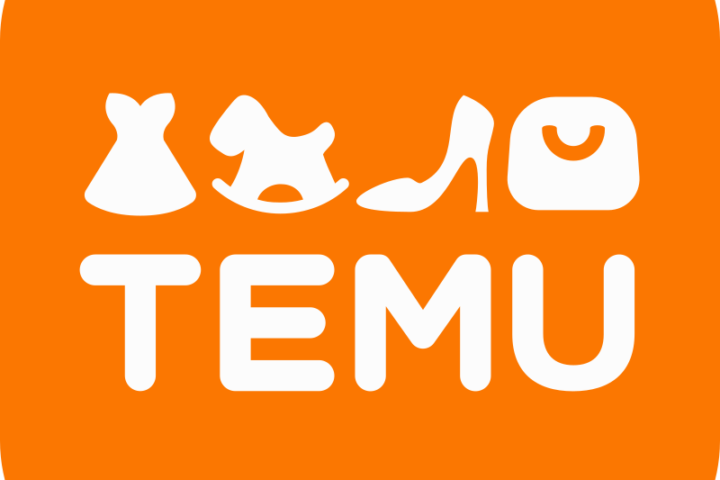Introduction to Taggbox and User-Generated Content
In the ever-evolving digital marketing landscape, the role of user-generated content (UGC) has become increasingly pivotal. UGC refers to any form of content, such as images, videos, text, and reviews, created by consumers rather than brands themselves. This type of content has gained significant traction due to its authenticity, which resonates more with audiences compared to traditional advertisements. As a result, UGC has the power to build trust, foster engagement, and ultimately drive conversions.
Taggbox emerges as a comprehensive platform designed to help brands harness the potential of user-generated content effectively. By offering tools to curate, display, and manage UGC, Taggbox enables businesses to integrate authentic consumer voices into their marketing strategies seamlessly. This platform aggregates content from various social media channels, providing brands with a unified and dynamic display of real-time customer experiences.
The importance of user-generated content in today’s digital marketing cannot be overstated. It serves as a powerful endorsement from real customers, which significantly enhances consumer trust. Studies have shown that consumers are more likely to trust and engage with content created by fellow users rather than the brands themselves. This shift in consumer behavior underscores the relevance of UGC in driving brand credibility and fostering deeper connections.
Taggbox simplifies the process of leveraging UGC by offering features that ensure content is not only curated efficiently but also displayed attractively across various touchpoints. From social media walls to website embeds and digital displays, Taggbox provides versatile solutions to showcase UGC, thus enhancing the overall brand experience. Brands can also moderate and analyze user-generated content to ensure it aligns with their values and marketing objectives.
Incorporating user-generated content through platforms like Taggbox is a strategic move for brands aiming to enhance their digital presence. By integrating authentic customer voices, brands can create more relatable and engaging marketing campaigns, ultimately driving higher consumer trust and engagement.
The Benefits of Using User-Generated Content
Incorporating user-generated content (UGC) into a brand’s marketing strategy offers a multitude of benefits that can significantly enhance brand perception and performance. One of the primary advantages is the increased authenticity and trust that UGC brings. When customers share their own experiences and opinions, it lends a credible voice to the brand, making it more relatable and trustworthy. According to a Nielsen study, 92% of consumers trust recommendations from individuals over branded content, highlighting the power of UGC in building trust.
UGC also plays a crucial role in boosting engagement rates. Content created by users often resonates more with the audience because it is perceived as genuine and relatable. This leads to higher interaction rates, with some studies showing that UGC posts receive 4x higher click-through rates compared to traditional marketing posts. For instance, brands like GoPro and Coca-Cola have leveraged UGC to create highly engaging and interactive campaigns that foster a sense of community among their customers.
Cost-effectiveness is another significant benefit of user-generated content. Traditional advertising and content creation can be expensive and time-consuming. In contrast, UGC allows brands to tap into a vast pool of content created by their users, often at little to no cost. This not only saves resources but also provides a continuous stream of fresh and diverse content. For example, tourism boards like VisitScotland have effectively utilized UGC to showcase destinations through the eyes of travelers, reducing the need for costly professional photography.
Moreover, UGC enhances social proof, a critical factor in influencing consumer behavior. When potential customers see real people using and endorsing a product, it validates the brand and its offerings. This social proof can lead to higher conversion rates; research indicates that UGC can drive a 29% higher conversion rate compared to campaigns or websites without it. Additionally, it fosters stronger customer loyalty, as users feel more connected and valued when their content is featured by the brand.
In summary, the integration of user-generated content into a marketing strategy can significantly enhance a brand’s authenticity, engagement, cost-efficiency, and social proof, ultimately leading to improved conversion rates and customer loyalty.
How Taggbox Works: A Step-by-Step Guide
Taggbox offers a streamlined process for leveraging user-generated content (UGC) to enhance your brand’s digital presence. Below is a detailed step-by-step guide to help you navigate through the platform efficiently.
Step 1: Setting Up Your Account
Begin by visiting the Taggbox website and signing up for an account. You’ll need to provide basic information such as your name, email address, and company details. Once registered, you can access the dashboard, where you’ll manage your UGC campaigns.
Step 2: Curating User-Generated Content
After setting up your account, the next step is to curate UGC from various social media platforms. Taggbox supports multiple sources, including Instagram, Twitter, Facebook, and more. To start curating, click on the ‘Add Social Feeds’ option in the dashboard. Select the desired social media platform and authorize Taggbox to access your account. You can then specify hashtags, mentions, or user accounts to pull content from. Taggbox will automatically aggregate relevant posts for you to review.
Step 3: Customizing Content Displays
Once you’ve curated your content, it’s time to customize how it will appear on your digital channels. Taggbox provides various customization options, allowing you to tailor the display to match your brand’s aesthetic. Navigate to the ‘Customize’ section in the dashboard, where you can choose from different themes, layouts, and styles. You can also add filters to exclude any unwanted content and utilize moderation tools to ensure high-quality displays.
Step 4: Embedding UGC Widgets
With your content curated and customized, the final step is embedding the UGC widgets on your website or other digital channels. Taggbox simplifies this process by providing an embed code for each widget. Copy the code and paste it into the HTML of your webpage where you want the UGC to appear. Taggbox also offers plugins for popular website platforms like WordPress, making the integration even more straightforward.
By following these steps, you can effectively harness the power of user-generated content to enhance your brand’s online presence. Taggbox’s intuitive platform ensures a seamless experience from start to finish, helping you engage your audience and build credibility through authentic, user-driven content.
Case Studies: Brands Succeeding with Taggbox
Real-life examples of successful brands utilizing Taggbox illuminate the practical benefits of user-generated content (UGC). Here, we delve into several case studies from diverse industries, showcasing how Taggbox has amplified their marketing efforts, surmounted challenges, and achieved remarkable results.
Case Study 1: Fashion Industry – XYZ Apparel
XYZ Apparel, a leading fashion brand, faced the challenge of engaging a younger audience and fostering authenticity in their marketing campaigns. By integrating Taggbox, XYZ Apparel harnessed user-generated content from social media, showcasing real customers wearing their products. This strategy not only enhanced brand authenticity but also fostered a sense of community among users.
Results: Within six months, XYZ Apparel saw a 30% increase in social media engagement and a 20% boost in online sales. Customer testimonials highlighted increased trust and relatability, attributing these gains to the authentic UGC displayed via Taggbox.
Case Study 2: Hospitality Industry – ABC Hotels
ABC Hotels aimed to improve their online presence and customer trust. Utilizing Taggbox, they aggregated user-generated photos and reviews from satisfied guests, embedding these in their website and social media channels. This strategy provided potential customers with genuine insights into guest experiences.
Results: ABC Hotels experienced a 25% rise in direct bookings and a 15% increase in average customer ratings within three months. Guests frequently cited the visible UGC as a key factor in their booking decisions, underscoring the impact of authentic content on consumer trust and engagement.
Case Study 3: Technology Industry – Tech Innovate
Tech Innovate, a tech gadget manufacturer, struggled with demonstrating the real-world application of their products. By incorporating Taggbox, Tech Innovate curated user-generated content showcasing their products in action, shared by tech enthusiasts and influencers.
Results: This approach led to a 40% increase in website dwell time and a 35% rise in conversion rates. Testimonials from Tech Innovate’s marketing team highlighted the role of UGC in bridging the gap between product features and user benefits, making their marketing more compelling and relatable.
These case studies underscore the transformative potential of user-generated content when integrated through Taggbox. By leveraging authentic user experiences, brands across various industries have successfully enhanced engagement, trust, and ultimately, their bottom line.
Best Practices for Curating User-Generated Content
Curating high-quality user-generated content (UGC) is a strategic process that requires a keen eye for relevance, impact, and alignment with your brand’s voice. To begin, it is essential to identify and select content that resonates with your target audience. This can be achieved by monitoring social media platforms, forums, and other digital spaces where your brand is mentioned. Look for content that not only showcases your products or services positively but also engages other users through likes, shares, and comments.
Ensuring brand alignment is another critical aspect of curating UGC. The content you choose to feature should reflect your brand’s values, aesthetics, and messaging. This consistency helps reinforce your brand identity and builds trust with your audience. Establish clear guidelines for what constitutes appropriate UGC, and communicate these standards to your audience to encourage submissions that fit your criteria.
Maintaining a consistent brand voice while featuring diverse user-generated content can be challenging but is achievable through careful selection and editing. When necessary, make minor adjustments to the content to better align with your brand’s tone without altering the original message. This approach allows you to preserve the authenticity of the user-generated content while ensuring it fits seamlessly into your brand’s narrative.
Obtaining user permissions is a crucial step in the curation process. Always ask for explicit consent before using someone else’s content, whether it’s a photo, video, or testimonial. This not only shows respect for the content creator’s intellectual property but also fosters a positive relationship with your audience. Utilize direct messages, emails, or dedicated submission forms to streamline the permission process.
Crediting content creators appropriately is vital for maintaining transparency and encouraging ongoing engagement. Always acknowledge the original creator by tagging them in social media posts or mentioning them in blog articles. Providing credit not only gives due recognition but also motivates other users to contribute their content, knowing they will be acknowledged.
Maximizing Engagement with Taggbox’s Customization Features
Taggbox offers a robust suite of customization features designed to maximize engagement with user-generated content (UGC). Personalizing the look and feel of UGC displays is essential to align with your brand’s aesthetics and enhance the user experience. With Taggbox, you can effortlessly tailor these displays to fit seamlessly into your existing marketing strategies.
One of the standout features of Taggbox is the ability to customize the visual presentation of UGC. This includes modifications to layout, color schemes, fonts, and more. By doing so, brands can ensure that UGC displays are not only visually appealing but also consistent with their overall branding. This consistency helps in creating a cohesive brand image, thereby fostering a deeper connection with the audience.
Interactive elements play a crucial role in driving user engagement. Taggbox allows brands to incorporate features such as clickable posts, call-to-action buttons, and real-time updates. These elements encourage users to engage actively with the content, whether it’s by clicking through to product pages, participating in contests, or sharing their own content. The interactive nature of these features keeps the audience engaged, thereby increasing the likelihood of conversion.
Integration with other marketing tools is another key aspect of Taggbox’s customization capabilities. Whether it’s CRM systems, email marketing platforms, or social media channels, Taggbox ensures that your UGC strategy is cohesive and well-integrated across various touchpoints. This seamless integration allows for a more targeted and efficient marketing approach, amplifying the impact of your user-generated content.
Aligning UGC displays with brand aesthetics and user experience is not merely an option; it’s a necessity. A well-customized UGC display not only grabs attention but also resonates with the audience, making them more likely to engage and share. By leveraging Taggbox’s extensive customization features, brands can create compelling, interactive, and visually consistent UGC displays that drive meaningful engagement and enhance their overall marketing efforts.
Measuring the Impact of User-Generated Content
Understanding the impact of user-generated content (UGC) on brand performance is crucial for optimizing marketing strategies. Various metrics can help in assessing the effectiveness and success of UGC campaigns. Key among these are engagement rates, conversion rates, and return on investment (ROI).
Engagement rates are an essential indicator of how well your audience is interacting with your content. Metrics such as likes, comments, shares, and time spent on page provide insights into audience engagement. High engagement rates often correlate with increased brand awareness and customer loyalty. Using Taggbox’s analytics tools, brands can track these interactions in real time, allowing for immediate adjustments to enhance engagement.
Conversion rates are another critical measure. They reflect the percentage of users who take a desired action, such as making a purchase or signing up for a newsletter, after interacting with UGC. By analyzing conversion rates, brands can determine how effectively UGC is driving tangible business outcomes. Taggbox provides detailed analytics that help in pinpointing which pieces of user-generated content are most effective at converting visitors into customers.
ROI is perhaps the most comprehensive metric, as it combines the insights gained from engagement and conversion rates with the costs associated with UGC campaigns. ROI calculations help in understanding the financial impact of UGC on your brand. Taggbox’s platform allows for comprehensive ROI tracking, offering insights into both direct and indirect returns from UGC efforts. This enables brands to make informed, data-driven decisions about future marketing investments.
Taggbox’s robust analytics tools are instrumental in evaluating the effectiveness of UGC campaigns. These tools offer a plethora of data points, from basic engagement metrics to advanced ROI analysis, empowering brands to make strategic adjustments in real time. By leveraging these analytics, brands can optimize their UGC strategies, ensuring maximum impact and efficiency.
Future Trends in User-Generated Content and Taggbox’s Role
The landscape of user-generated content (UGC) is rapidly evolving, with technological advancements playing a pivotal role in shaping its future. Emerging trends such as artificial intelligence (AI) and machine learning are set to revolutionize how UGC is curated, personalized, and utilized by brands to engage with their audiences. These technologies offer the potential to analyze vast amounts of content, identifying patterns and preferences that can help brands tailor their marketing strategies more effectively.
AI-driven tools can automate the process of content curation, selecting the most relevant user-generated content based on predefined criteria. This not only saves time but also ensures that the content resonates with the target audience. Machine learning algorithms can further enhance personalization by learning from user interactions and continuously improving the relevance of the content displayed. This level of sophistication in UGC management can significantly boost engagement rates and foster a deeper connection between brands and their customers.
Taggbox is at the forefront of this transformation, leveraging cutting-edge technologies to stay ahead in the dynamic realm of UGC. The platform’s commitment to innovation is evident in its continuous efforts to integrate AI and machine learning capabilities into its services. By doing so, Taggbox ensures that brands can seamlessly adapt to the changing digital landscape and meet the evolving expectations of consumers.
Moreover, Taggbox’s proactive approach to innovation underscores its dedication to providing brands with the tools they need to thrive. By focusing on enhancing user experiences through advanced content curation and personalization, Taggbox positions itself as a leader in the UGC space. As brands navigate the complexities of digital marketing, Taggbox’s innovative solutions offer a strategic advantage, enabling them to harness the power of user-generated content more effectively and efficiently.



